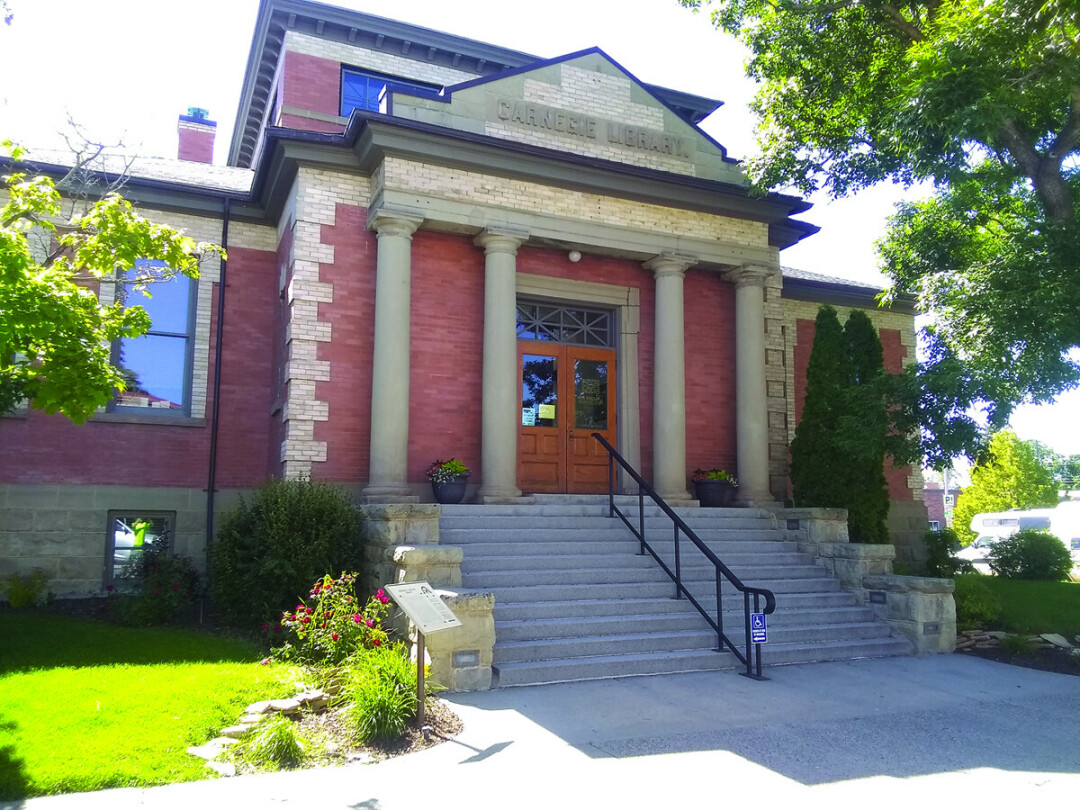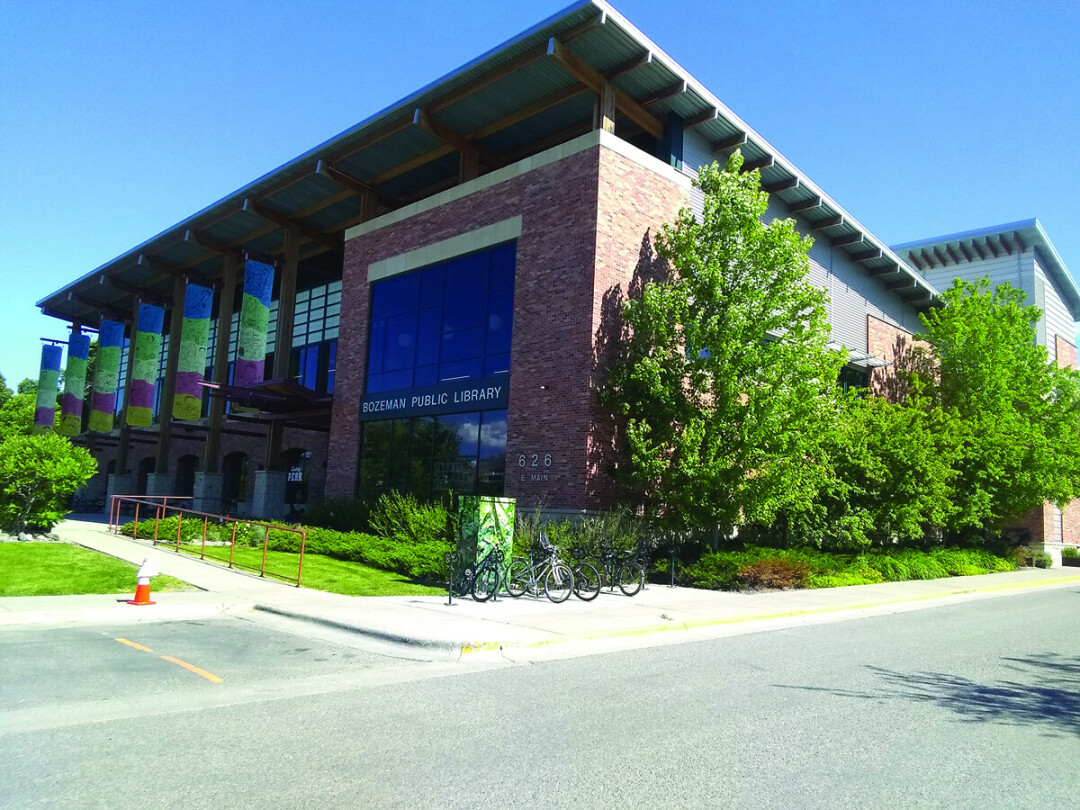Bozeman Libraries Through the Years
Steve McGann | Tuesday Aug. 1st, 2023
A well-known criminal was once asked why he robbed banks. He replied, “That’s where they keep the money.” My answer to why I spend so much time in libraries is similar; they are full of books. One of my best childhood memories is going to the local branch library with my Mother. The oldest of six, I did not get much time alone with her. But she was a great reader and, for me, being the first child to learn that skill meant we went together to pick up our stacks of books every two weeks. School was just okay, but reading was wonderful.
I read my way through a progression of libraries as I grew up in Illinois, culminating with the privilege of doing research at the brand-new-at-the-time Joseph Regenstein Library at the University of Chicago. My first Montana library was the Renne at MSU. But for most of my adult life I have been a regular patron of Bozeman libraries as they have evolved.
In the 1970s, the Bozeman Public Library was located in the Carnegie Library building on North Bozeman, just off Main Street. Later, it moved to a new building at Lamme and Rouse. Later still, to its current location on East Main Street. I did not remember when these moves had occurred, or exactly why. Recently, as I wandered the Library, I spotted The Bozeman Public Library: A History, a slim volume by Phyllis Smith, which contained all the answers, and more. Published in 2006, this book covers the story of the libraries in Bozeman from beginnings in the 19th century through the opening of the new building on East Main Street in 2006.
Phyllis Smith authored five books of history on Montana. She volunteered at the Gallatin History Museum and at the Bozeman Public Library, and was thus uniquely placed to write its story. She describes a couple of early attempts at establishing reading rooms and libraries in Bozeman, one of which was the earliest in the Territory, in 1872. These were not completely successful, but eventually a Library board was appointed, a mill levy passed, and the book collection installed in a room at the Opera House. Peter Koch, who was one of the founders of MSU, served on the board, but the most influential member was Belle Keith Chrisman, who was appointed the first librarian in 1895.
Miss Chrisman, whose father was one of the early settlers in Bozeman and later served as county treasurer, was a teacher in area schools along with her sister, Bettie, who later became county superintendent of schools. In the ambitious family tradition, Belle Chrisman decided that Bozeman needed a library building, and thought of Andrew Carnegie. Beginning in the 1880s and continuing until the end of his life, the steel magnate Andrew Carnegie endowed over 3,000 libraries in the United States and all over the world. Belle Chrisman contacted the librarian in Great Falls, where funds for a Carnegie Library had just been secured. Before the word was used, she wrote a ‘grant.’ The rules of a Carnegie endowment specified that building funds would be provided if the community provided the land and monies for operation and maintenance.
Carnegie’s people replied with questions concerning these stipulations. Bozeman city leaders provided answers, funds and the building site. Just six months had passed. Within two years, in 1904 the library was dedicated. The building at 35 N Bozeman was in the classic style.
By the time the new library opened to the public, Belle Chrisman had moved on to other pursuits, including ranching with her family members. She left a wonderful legacy to the people of Bozeman. The Carnegie library served the city for over 75 years.
Reading Phyllis Smith’s book and deciding to share the story, there was a fear that it would be a dry account of buildings, names, and dates, the excitement residing only in the books on the shelves. This turned out to be untrue. The story of the Bozeman Libraries contained controversy, even conflict.
The population of Bozeman was around 3,000 in 1900. By 1970 it was close to 20,000. Community leaders recognized the need for a larger library. From the first study to the completion of the library on Rouse and Lamme, the process took seven years. Phyllis Smith describes this period in detail. It was not an easy task. Despite the availability of federal and private funds, city and county officials refused support. Asking the county for monies resulted in the comment from commissioners that “cows don’t read.” A state representative from Bozeman proudly stated that he had never been inside a library.
Finally, the city commission reluctantly allowed a bond issue that passed with 72% support, which provided 1.4 million dollars for the project. Even then, there were problems including that the land decided upon, though owned by the city, had to be purchased by the library board. (Later, when the Carnegie property was sold by the city, the library received none of those funds.) After years of effort, the new library was built and dedicated in 1981. A festive book brigade was held, during which library books were passed hand-to-hand for the two block distance to the new building. This fun event overshadowed the huge and difficult job that so many people in Bozeman had performed to make the library a reality.
This was the library where we took our sons for books and their introduction to computers and special events, such as Turn Off the TV Week and the library sleepover. I am sure that many other students and adults came into contact with the digital age in that building. Relentlessly, our city grew. Close to 30,000 people lived in Bozeman by the turn of the century. The library was crowded—not just in demand for space for books, computers, and staff—usage of the facility was way up. The previous architectural firm was consulted and announced that it could not accommodate building another story. Citizens began in 2000 to look for alternatives. There was conflict.
Once again, a bond issue was proposed. Once again, many residents, including the Chamber of Commerce, would not support it. Once again, the bond issue passed overwhelmingly. The project proceeded. Yet, at every step there was criticism. The site, the building, the taxes, the amount of space, the green architecture (not sure if anyone objected to the color of the paint). The new Bozeman Public Library on East Main was dedicated in 2006. Three-quarters of the cost was privately donated. Those folks, and those who tirelessly worked on the project (mostly volunteers) are owed much. The library, next to beautiful Lindley Park, oversaw a renaissance of the entire east end of Bozeman. Driving into town from I-90 brings one immediately into a vibrant community.
Right now, the Library Foundation is wrapping up a renovation of the East Main building in order to provide better service to our citizens. This time, all of the funds have been privately donated. This remodel has made the library even more functional and welcoming. At the same time, since our city is now at 58,000 people and growing, a new complex is being planned for the west side. This city facility will include a new branch library, a new pool complex, new indoor recreation opportunities, and much else. By all means, help analyze, even criticize the project. Do so from the inside rather than from the sidelines. Get involved. And think of all those citizens, trustees, volunteers and librarians dating back to Belle Chrisman and Phyllis Smith, who gave us these treasured buildings and all their stories.
The term “anti-library” refers to books that one acquires but does not read, or intends to read in the future. The theory goes that a person who does this is more humble and realistic about their own knowledge. All of that knowledge upon the shelf, the books unopened, not yet studied, form a sort of future curriculum to be pursued. The books are there waiting. Some do not like the word anti-library, saying it seems negative. There is a Japanese word, tsundoku, which means “books unread.” It is not necessary to have those shelves in the home. Go to the library. There are rows and rows of unread, even unknown books. Libraries equal knowledge. Knowledge equals freedom.
I have found libraries to be more than the place where books are kept. For me, they have been a place of comfort, even refuge. There are days when nothing on the shelves interests me. This of course has everything to do with me and nothing to do with the books. But there are other, magical days when every book on every shelf in every aisle seems to be the most interesting volume I have ever encountered. These overwhelming days are again due to my mood, yet I have come to the right place to have that mood occur. I arrive not thinking of all the books I have read but anticipating the knowledge and adventures that await. It is exciting and humbling. For decades, the Bozeman Libraries have done all of that for me, and more.
| Tweet |
